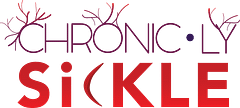Browsing Category
- Blood Exchanges
- Blood Transfusion
- Chronic Pain
- Evolutionary History of SCD
- Genetics
- Genotypes
- Health disparities
- History of Sickle Cell Disease
- Home Remedies
- Medical Terminology
- MLK Day
- Pain
- Quick Smoothie Recipes
- Recipes
- Sickle Cell Anemia
- Sickle Cell Blood Disorder
- Sickle Cell Crisis
- Sickle Cell Trait
- Sickle Hemoglobin SC
- SMOOTHIE RECIPES
Browsing Category
- Blood Exchanges
- Blood Transfusion
- Chronic Pain
- Evolutionary History of SCD
- Genetics
- Genotypes
- Health disparities
- History of Sickle Cell Disease
- Home Remedies
- Medical Terminology
- MLK Day
- Pain
- Quick Smoothie Recipes
- Recipes
- Sickle Cell Anemia
- Sickle Cell Blood Disorder
- Sickle Cell Crisis
- Sickle Cell Trait
- Sickle Hemoglobin SC
- SMOOTHIE RECIPES
Sickle Cell Glossary
Chronic•ly Sickle Glossary
Exchange, Blood
E
an exchange transfusion is a medical procedure that's done by removing and replacing a person’s blood or plasma with a donor's blood or plasma. The medical definition of an exchange transfusion is the simultaneous withdrawal of the recipient's blood and transfusion with the donor's blood.
Thalassemia
T
a group of inherited blood disorders caused by a gene mutation impacting the red blood cell's ability to carry oxygen to vital tissues and organs. ● Alpha thalassemia: occurs when a mutated gene or genes related to the alpha-globin hemoglobin goes missing or changes. ● Beta thalassemia: occurs when gene defects affect the production of the beta-globin hemoglobin.
I am a Sickle Cell Warrior who is blogging about sickle cell disease. I am Chronic•ly Sickle 🩸
Recent Post
-

-

Sweet & Tangy 10 Min Strawberry Mandarin Smoothie Recipe
November 19, 2021
-

Sickle Cell Disease 101: A Basic Conversation About Genetics
November 4, 2021
-

Sickle Cell Trait: 8 Important Facts Everyone Needs to Know
August 22, 2021
-

My 1st Sickle Cell Crisis & How It Changed Our Lives Forever
August 22, 2021
feature post of the week
-

Sweet & Tangy 10 Min Strawberry Mandarin Smoothie Recipe
November 19, 2021





